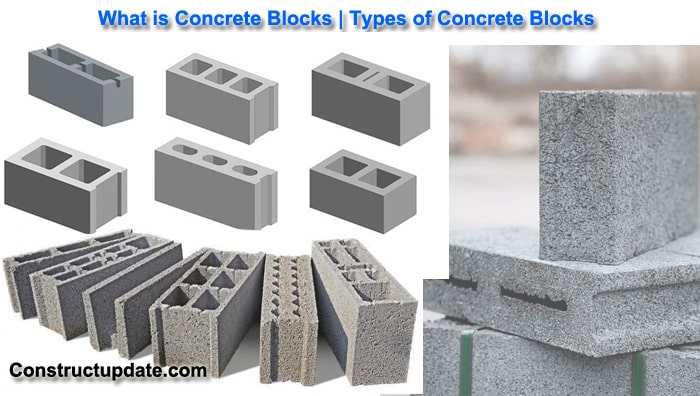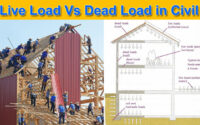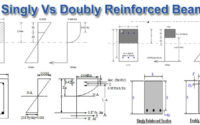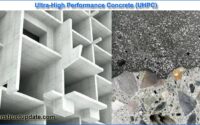Concrete Blocks Types | Hollow Concrete Blocks Vs. Solid Concrete Blocks
Concrete blocks are divided into two types: Hollow Concrete Block and Solid Concrete Block.
Both of these concrete block kinds are commonly used to build walls, although they can also be used for other purposes. As you’ll see, not all solid concrete blocks are completely solid, but they are more solid than hollow concrete blocks.
Below, we’ll go through the numerous varieties of concrete blocks, often known as concrete masonry units or CMU.
Concrete blocks are an alternative to brickwork for construction, with benefits and drawbacks. Concrete blocks are larger than bricks, thus mortar joints require less cement to hold them together. Concrete blocks, on the other hand, are more prone to movement and cracking than bricks when a foundation shifts due to their moisture content and larger size.

Hollow Concrete Blocks
Portland cement, aggregate, and sand are used to make Hollow concrete blocks. In most cases, fly ash or bottom ash is added to the concrete mix.
Hollow Blocks Sizes:
Length: 400, 500 and 600mm
Height: 200 or 100 mm
Width: 100, 150, 200 mm
Solid Concrete Blocks
Portland cement, aggregate, and sand are used to make solid concrete blocks. In most cases, fly ash or bottom ash is added to the concrete mix.
Fully solid concrete blocks resemble grey bricks in appearance, but they are often larger. They’re useful for constructing protective walls against the elements, such as high winds.
Garden walls and planters, retaining walls, foundations, steps, and firepits are just a few of the tasks that they can be utilised for.
Solid concrete blocks are often heavier than hollow concrete blocks, although they can also be less costly.
Types of Solid Concrete Blocks
Solid concrete blocks won’t offer as many options as hollow concrete blocks, but you’ll still have a variety to choose from that can be used for a variety of applications.
- Fly Ash Block
- Aerated Autoclaved Block
- Paving Block
- Cellular Lightweight Block
- Expanded Clay Aggregate Block
Concrete Stretcher Block
To link the masonry corners, concrete stretcher blocks are employed. Stretcher blocks are concrete hollow blocks that are commonly used in construction. They’re placed with their length parallel to the wall’s face.
Concrete Pillar Block
Pillar blocks are most commonly used to construct pillars or piers, as the name implies. They’re also known as double corner blocks, and they’re made such that both ends may be seen. Many people think of pillar blocks when they think of concrete blocks, and they’re generally available in big quantities at home improvement stores.
Concrete Lintel Block
A lintel is a horizontal structural block that connects two vertical supports and spans the space or opening between them. It might be a single embellished structural unit or a combination adorned architectural feature. Over entrances, doorways, windows, and fireplaces, it’s common.
Concrete Jamb Block
A shallow groove runs across the two holes and a deeper groove runs down one end of the jamb block. They provide space for a window’s casing members and are commonly found in double-hung windows.
Concrete Column Block
A square block with a single hole is commonly used as a column block. These can be stacked to make columns, and the insides can be reinforced.
Concrete Corner Block
At the ends or corners of masonry, corner blocks are employed. The ends, which might be window or door openings, are placed so that their plane end is visible from the outside and the other end is locked with the stretcher block.
Concrete Splitface Block
Splitface blocks resemble pillar blocks with the exception of one edge, which has a rough, almost jagged texture that reveals the block’s interior aggregates. This block is porous, making it prone to water damage, but it also has a lesser chance of termite infestation and is less fire-resistant.
Concrete Bullnose Block
Bullnose Concrete blocks are similar to corner blocks in terms of function and structure, but they have rounded edges (which is the reason for their name).
Concrete Partition Block
The only difference between partition blocks and concrete pillar blocks is that partition blocks are taller than they are wide. When looked straight on, these narrow blocks resemble wide goggles.
Hollow blocks provide the following advantages over solid blocks:
- Because hollow blocks are light in weight, they provide a lower dead load on structures and utilise less steel per square foot than solid blocks in masonry walls.
- The cost of making a hollow block per unit is low since the raw materials required for a similar-sized block are less than for a solid block.
- Because hollow blocks are lighter than solid blocks, masons working on masonry projects will be more productive because they are easier to handle and install than solid blocks.
- Because the surface area of application is smaller for Hollow blocks than for Solid blocks, less jointing mortar is required.
- When compared to solid blocks, hollow blocks provide higher acoustic and thermal insulation. This will cut down on the amount of electricity used to heat and cool the rooms in the house.





